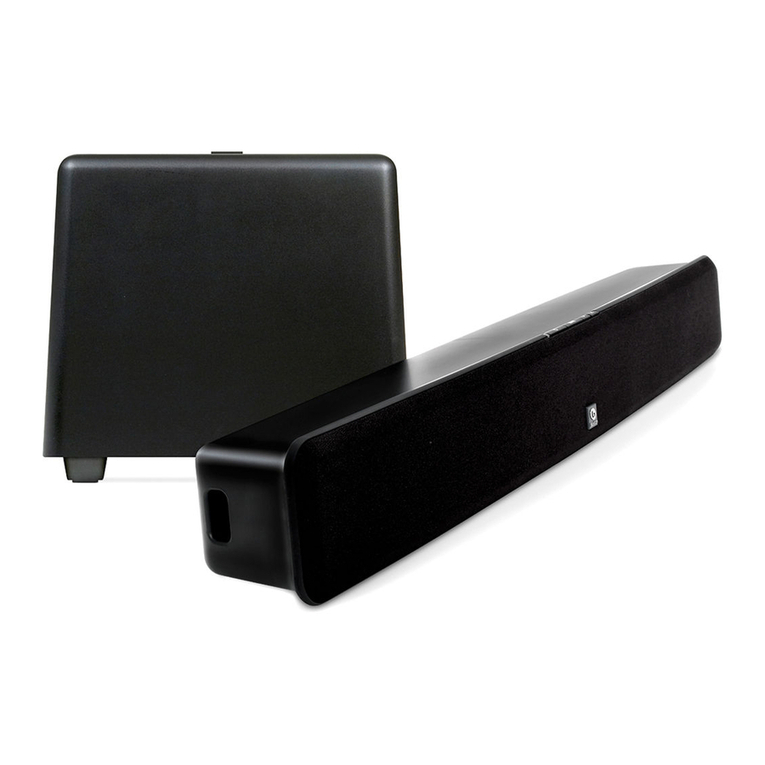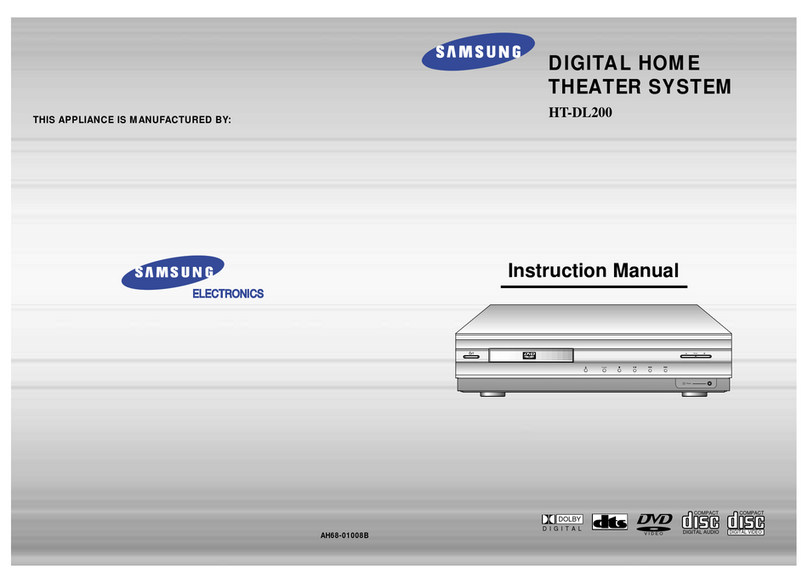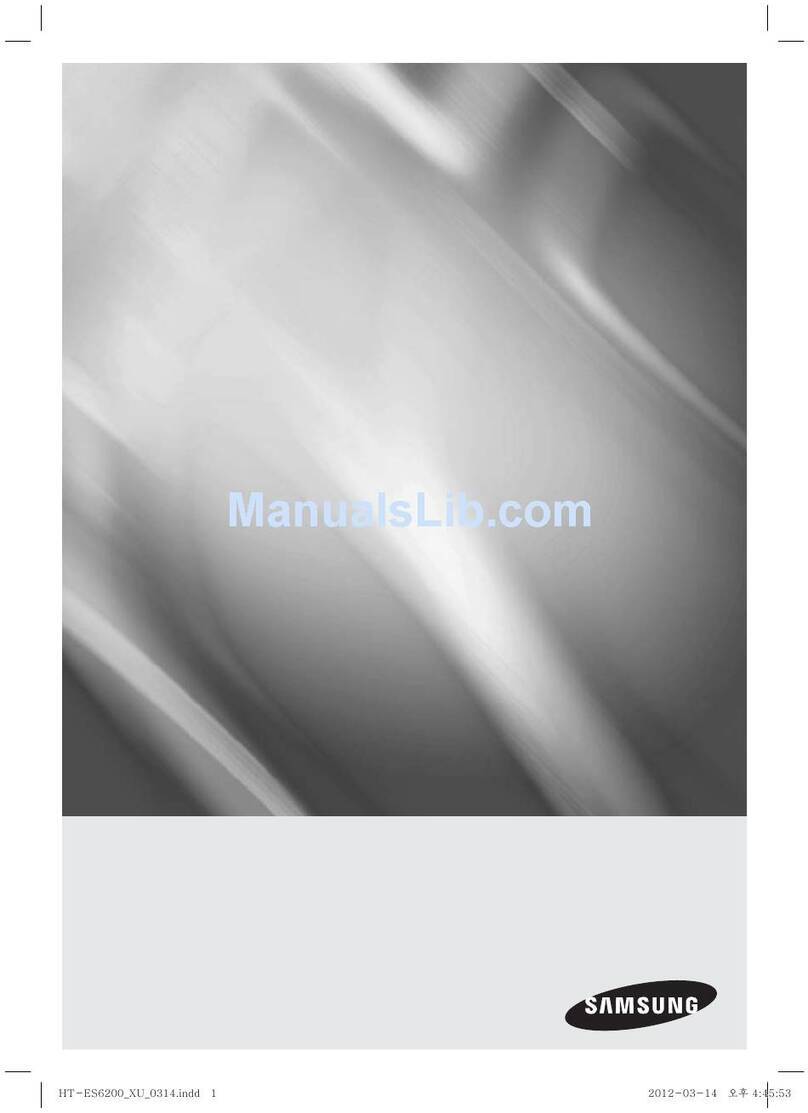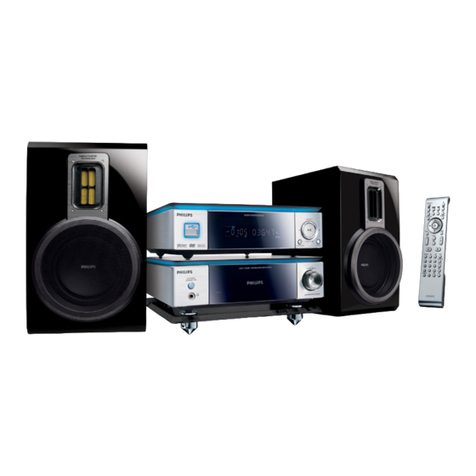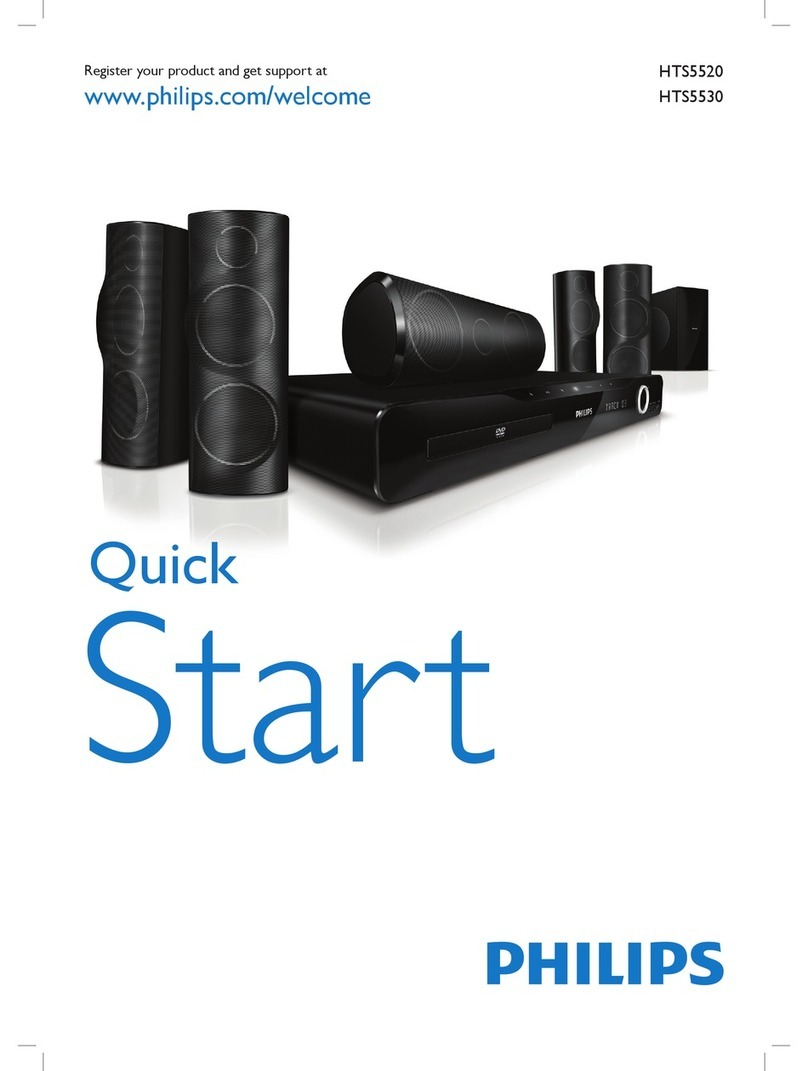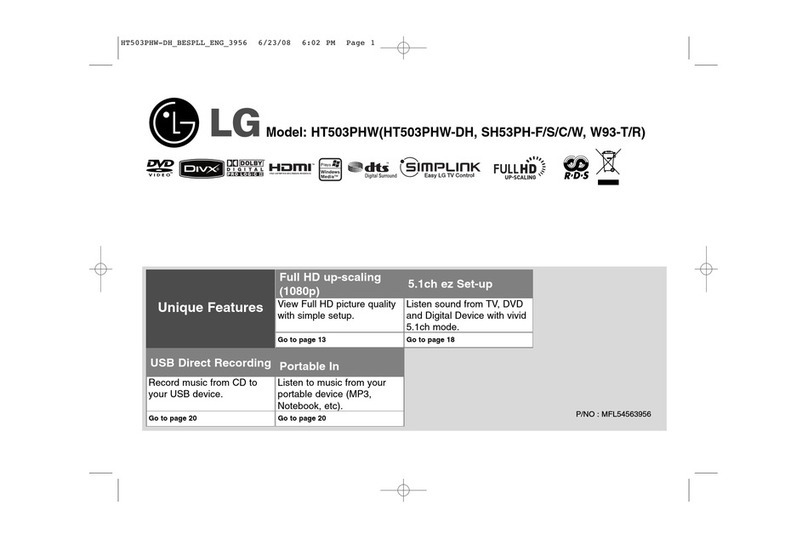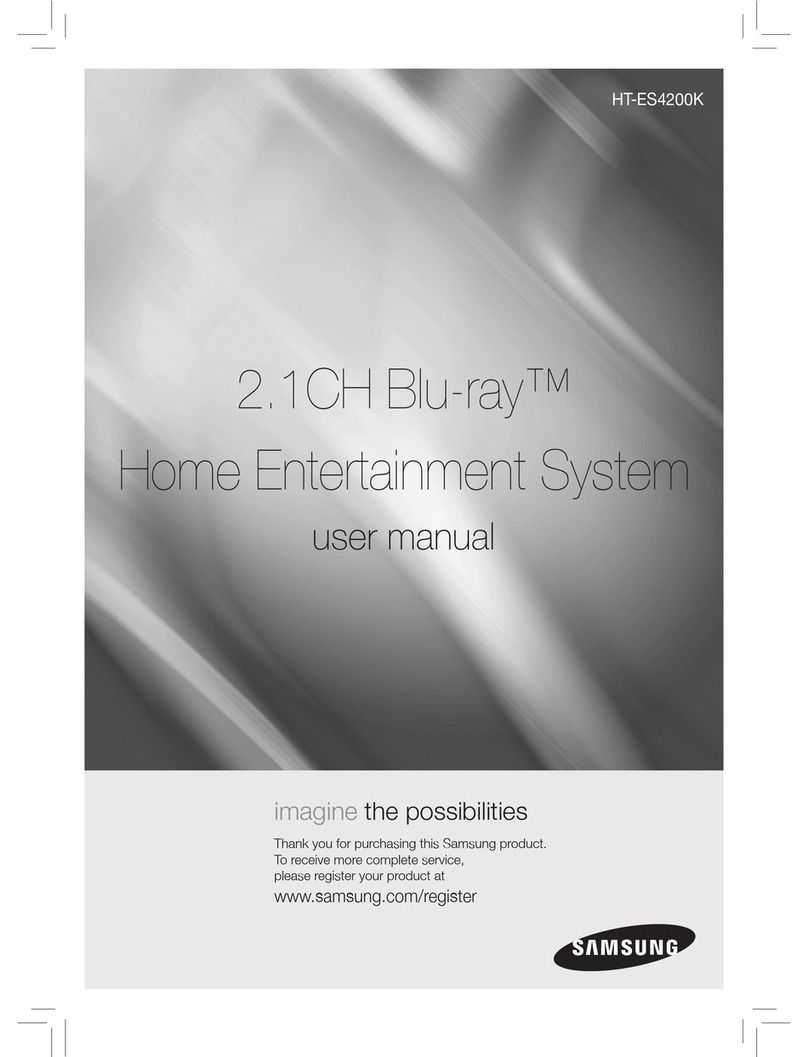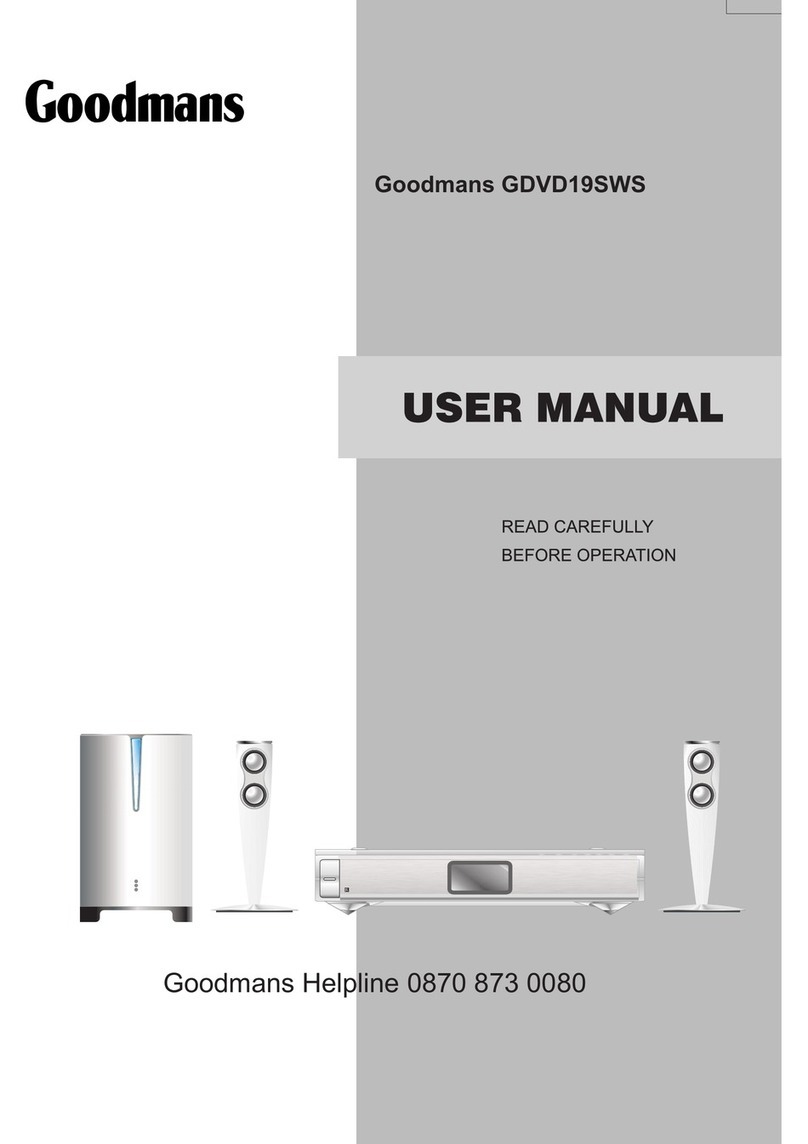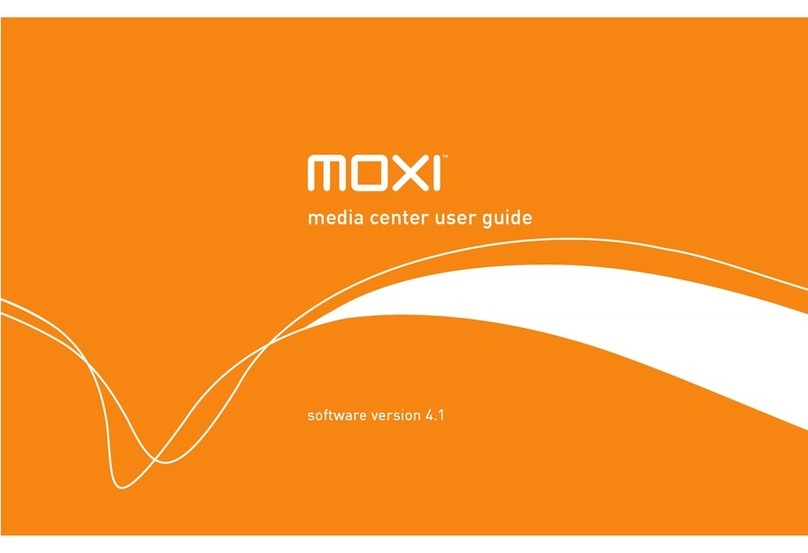Boston Acoustics DVD Receiver 2.0 User manual

OWNER’S MANUAL / SAFETY INSTRUCTIONS / COMPLIANCE INFORMATION
TVee®Model 20
Television Entertainment Enhancement System
Español
Sistema de Mejora del
Entretenimiento Televisivo.
Francais
Système de perfectionnement
sonore pour télévision et
système de divertissement à
domicile

2
5HDGWKHVHLQVWUXFWLRQV
.HHSWKHVHLQVWUXFWLRQV
+HHGDOOZDUQLQJV
)ROORZDOOLQVWUXFWLRQV
'RQRWXVHWKLVDSSDUDWXVQHDUZDWHU
&OHDQRQO\ZLWKGU\FORWK
'RQRWEORFNDQ\YHQWLODWLRQRSHQLQJV,QVWDOOLQDFFRUGDQFHZLWK
WKHPDQX DFWXUHUҋVLQVWUXFWLRQV
'RQRWLQVWDOOQHDUDQ\KHDWVRXUFHVVXFKDVUDGLDWRUVKHDW
UHJLVWHUVVWRYHVRURWKHUDSSDUDWXVLQFOXGLQJDPSOL LHUVWKDW
SURGXFHKHDW
'RQRWGH HDWWKHVD HW\SXUSRVHR WKHSRODUL]HGRUJURXQGLQJ
W\SHSOXJ$ SRODUL]HGSOXJKDVWZREODGHVZLWKRQHZLGHUWKDQWKH
RWKHU$JURXQGLQJW\SHSOXJKDVWZREODGHVDQGDWKLUGJURXQGLQJ
SURQJ7KHZLGHEODGHRUWKHWKLUGSURQJLVSURYLGHG RU\RXU
VD HW\, WKHSURYLGHGSOXJGRHVQRW LWLQWR\RXURXWOHWFRQVXOWDQ
HOHFWULFLDQ RUUHSODFHPHQWR WKHREVROHWHRXWOHW
3URWHFWWKHSRZHUFRUG URPEHLQJZDONHGRQRUSLQFKHGSDUWLFXODUO\
DWSOXJVFRQYHQLHQFHUHFHSWDFOHVDQGWKHSRLQWZKHUHWKH\H[LW
URPWKHDSSDUDWXV
2QO\XVHDWWDFKPHQWVDFFHVVRULHVVSHFL LHGE\WKHPDQX DFWXUHU
8QSOXJWKLVDSSDUDWXVGXULQJOLJKWQLQJVWRUPVRUZKHQXQXVHG RU
ORQJSHULRGVR WLPH
IMPORTANT SAFETY INSTRUCTIONS
5H HUDOOVHUYLFLQJWRTXDOL LHGVHUYLFHSHUVRQQHO6HUYLFLQJLV
UHTXLUHGZKHQWKHDSSDUDWXVKDVEHHQGDPDJHGLQDQ\ZD\VXFK
DVSRZHUVXSSO\FRUGRUSOXJLVGDPDJHGOLTXLGKDVEHHQVSLOOHG
RUREMHFWVKDYH DOOHQLQWRWKHDSSDUDWXVWKHDSSDUDWXVKDVEHHQ
7KLVFODVV%GLJLWDODSSDUDWXVFRPSOLHVZLWK&DQDGLDQ,&(6
&HWDSSDUHLOQXPpULTXHGHFODVVH%HVWFRQ RUPHiODQRUPH
10%GX&DQDGD
H[SRVHGWRUDLQRUPRLVWXUHGRHVQRWRSHUDWHQRUPDOO\RUKDV
EHHQGURSSHG
0DLQWDLQDPLQLPXPGLVWDQFHR PPDURXQGWKH URQWUHDU
DQGVLGHVR WKHDSSDUDWXV RUVX LFLHQWYHQWLODWLRQ7KHYHQWLODWLRQ
VKRXOGQRWEHLPSHGHGE\FRYHULQJWKHYHQWLODWLRQRSHQLQJVRU
SODFLQJRQRUDURXQGWKHDSSDUDWXVLWHPVVXFKDVQHZVSDSHUV
WDEOHFORWKVFXUWDLQVHWF
1RRSHQ ODPHVRXUFHVVXFKDVOLJKWHGFDQGOHVVKRXOGEH
SODFHGRQWKHDSSDUDWXV
7KHDSSDUDWXVVKDOOQRWEHH[SRVHGWRGULSSLQJRUVSODVKLQJ
(LWKHUWKHSRZHULQOHWFRQQHFWRURQWKHUHDUR WKHDSSDUDWXVRU
WKHSRZHUSOXJDWWKHZDOOPXVWUHPDLQDFFHVVLEOHWREHDEOHWR
GLVFRQQHFWSRZHU URPWKHDSSDUDWXV
7RFRPSOHWHO\GLVFRQQHFWWKLVDSSDUDWXV URPWKH$&0DLQV
GLVFRQQHFWWKHSRZHUVXSSO\FRUGSOXJ URPWKH$&UHFHSWDFOH
1RREMHFWV LOOHGZLWKOLTXLGVVXFKDVYDVHVVKDOOEHSODFHGRQ
WKHDSSDUDWXV
1RWH 7KLVHTXLSPHQWKDVEHHQWHVWHGDQG RXQGWRFRPSO\ZLWK
WKHOLPLWV RUD&ODVV%GLJLWDOGHYLFHSXUVXDQWWRSDUWR WKH)&&
$PHULFDQ8VHUV
5XOHV7KHVHOLPLWVDUHGHVLJQHGWRSURYLGHUHDVRQDEOHSURWHFWLRQ
DJDLQVWKDUP XOLQWHU HUHQFHLQDUHVLGHQWLDOLQVWDOODWLRQ7KLVHTXLS
PHQWJHQHUDWHVXVHVDQGFDQUDGLDWHUDGLR UHTXHQF\HQHUJ\DQGL
QRWLQVWDOOHGDQGXVHGLQDFFRUGDQFHZLWKWKHLQVWUXFWLRQVPD\FDXVH
KDUP XOLQWHU HUHQFHWRUDGLRFRPPXQLFDWLRQV+RZHYHUWKHUHLVQR
JXDUDQWHHWKDWLQWHU HUHQFHZLOOQRWRFFXULQDSDUWLFXODULQVWDOODWLRQ,
WKLVHTXLSPHQWGRHVFDXVHKDUP XOLQWHU HUHQFHWRUDGLRRUWHOHYLVLRQ
UHFHSWLRQZKLFKFDQEHGHWHUPLQHGE\WXUQLQJWKHHTXLSPHQWR DQG
RQWKHXVHULVHQFRXUDJHGWRWU\WRFRUUHFWWKHLQWHU HUHQFHE\RQHRU
PRUHR WKH ROORZLQJPHDVXUHV
5HRULHQWRUUHORFDWHWKHUHFHLYLQJDQWHQQD
,QFUHDVHWKHVHSDUDWLRQEHWZHHQWKHHTXLSPHQWDQGUHFHLYHU
&RQQHFWWKHHTXLSPHQWLQWRDQRXWOHWRQDFLUFXLWGL HUHQW URP
WKDWWRZKLFKWKHUHFHLYHULVFRQQHFWHG
&RQVXOWWKHGHDOHURUDQH[SHULHQFHGUDGLR79WHFKQLFLDQ RUKHOS
ҋ
&DXWLRQ 8QDXWKRUL]HGFKDQJHVRUPRGL LFDWLRQVWRWKHUHFHLYHUFRXOG
YRLGWKHXVHU VDXWKRULW\WRRSHUDWHWKHHTXLSPHQW
7KLVV\PERO RXQGRQWKHDSSDUDWXVLQGLFDWHVKD]DUGV
DULVLQJ URPGDQJHURXVYROWDJHV
7KLVV\PERO RXQGRQWKHDSSDUDWXVLQGLFDWHVWKHXVHU
VKRXOGUHDGDOOVD HW\VWDWHPHQWV RXQGLQWKHXVHUPDQXDO
7KLVV\PERO RXQGRQWKHDSSDUDWXVLQGLFDWHV
GRXEOHLQVXODWLRQ
:DUQLQJ
7RUHGXFHWKHULVNR LUHRUHOHFWULFDOVKRFNGRQRW
H[SRVHWKLVDSSDUDWXVWRUDLQRUPRLVWXUH
&DQDGLDQ8VHUV
5/$15DGLR/RFDO$UHD1HWZRUN(TXLSPHQW
7KLVHTXLSPHQWPD\RQO\EHXVHGLQGRRUVLQ)5
7KLVHTXLSPHQWPD\RQO\EHXVHGLQRQHҋVRZQSUHPLVHVLQ,7
7KLVHTXLSPHQWLV RUSULYDWHXVHRQO\LQ/8
2SHUDWLRQLVQRWDOORZHGZLWKLQDUDGLXVR NP URPWKHFHQWUH
R 1\cOHVXQGLQ12
+HUHE\%RVWRQ$FRXVWLFV,QF-XELOHH'ULYH3HDERG\0$
86$GHFODUHVWKDWWKLV¬79HH0RGHO¬LVLQFRPSOLDQFHZLWKWKH
HVVHQWLDOUHTXLUHPHQWVDQGRWKHUUHOHYDQWSURYLVLRQVR 'LUHFWLYH
(&¬$FRS\R WKH'HFODUDWLRQR &RQ RUPLW\'2&PD\EH
REWDLQHG URP
¬
2OLYHU.ULHWH
%RVWRQ$FRXVWLFV'LYLVLRQR '0(XURSH%9
%HHPGVWUDDW
0$(LQGKRYHQ
7KH1HWKHUODQGV
(XURSHDQ8VHUV
AT CZ FI IS LT PT SE FR
BE DK DE IE MT SK CH IT
EE GR LV NL SI TR LU CY
HU PL ES GB NO

3
;9043,=,3
057<;
9
3
76>,9
;9043,=,3
057<;
3
76>,9
MUTE
1 2 3 4 5 6 7 8 9
TVee®Model 20
R
20V
2.5A
20V
2.5A
1 2 3 4
1 2 3 4
The Parts of TVee
1 Status Indicator – Lights in various colors to indicate operating status. See the table below.
2 Power Button – Lets you manually activate TVee or put it in standby mode.
3 Mute Button – Lets you temporarily mute TVee.
4 Volume Up and Down Buttons – Let you manually adjust the volume of the TVee.
5 Wireless ID Switch – Selects the“channel” for the wireless subwoofer signal. Set 11 in the same position.
6 Trim Level Switch – Adjusts the input sensitivity of TVee.
7 Inputs – Receives the input signal for the TVee. See the “Connect TVee” section for more information.
8 Power Input – Connect the power supply 10 here.
9 Power On/Off Switch – Turns the TVee soundbar on or off. Normally it is left on all the time.
10 Power Supply – Provides power to the soundbar. Plug it into the wall and connect it to the power input 8.
Soundbar Status Indicator
Green Steady Normal power-on mode.
Green Blinks Once Shows a remote control signal is being received.
Orange Flashing TVee is ready to learn a remote control command.
Orange Steady The control button that’s learning a control command is selected; TVee waiting
for an IR command to learn.
Flashing Green TVee has successfully learned a remote control command.
Flashing Red TVee has failed to learn a remote control command.
Flashing Red and Orange Indicates learned IR codes successfully erased.
MUTE
10 Audio connection cable

4
11 Wireless ID Switch – Selects the“channel” for the wireless subwoofer signal. Set in the same position as 5.
12 Volume – Adjusts the volume of the subwoofer to balance with the soundbar.
13 Status Indicator – Lights green when the subwoofer is active and red when it is in standby mode.
14 Power On/Off Switch – Turns the TVee subwoofer on or off. Normally it is left on all the time.
15 Power Cord – Plug it into an AC outlet.
TVee
®
Model 20
>09,3,::0+
=63<4,
76>,9
405 4(?
11
12
13
14 15
T1A/250V
120V~
60Hz
1A
T1A/250V
120V~
60Hz
1A
Specifications
System Power 100 watts peak
Dimensions (H x W x D) Soundbar 33⁄4x 31 x 4” (95 x 788 x 102mm)
Subwoofer 91⁄2x 101⁄2x 11” (241 x 266 x 280mm)
Weight Soundbar 8.4 lbs (3.9kg)
Subwoofer 11 lbs (5kg)
About TVee
Congratulations on selecting TVee for your home entertainment system. TVee combines the famous Boston sound with
unprecedented ease of use. From two compact components, TVee delivers sound that will add an entirely new dimension
to your television entertainment experience. Powerful amplifiers and 3D sound processing circuitry ensure exciting perfor-
mance. Wireless connection between the soundbar and subwoofer makes TVee easy to setup—the ideal combination of
performance and convenience. If necessary, TVee can even learn the control signals from your remote control for maximum
ease of use and totally transparent operation.
Placing TVee
You’re probably anxious to start using your TVee so let’s get started. First you should position
the TVee components.
The soundbar should be placed so it is centered with the TV screen.
It can be in front of the television. Or if your television is housed in furniture that has a
shelf right above the screen the soundbar can go there. But avoid places that are semi-
enclosed. That can upset the natural sound balance of TVee. There are keyholes in the
back of the soundbar cabinet to facilitate hanging it on a wall.
The subwoofer is easy. It can go just about anywhere in the room. Since it gets its signal
wirelessly you don’t need to worry about connections. Just plug it into an AC outlet.
Corner placement can help reinforce bass output.

5
Connect TVee
Next you need to get an input signal into the TVee soundbar. All it takes is the audio connection cable that is supplied. There
are two likely sources for a signal—your television or a cable television connection box. (The control box for a satellite system
is for this purpose the same as a cable box. For simplicity we’ll call it a cable box, but it could be either one.)
The main advantage of getting the signal from the cable box is that it is easier to set up. But if you have multiple signal
sources in addition to the cable signal, such as a DVD player, you might need to get the signal from the TV directly so you can
enjoy the TVee sound with all of your media.
The subwoofer receives a wireless audio signal from the soundbar—you just need to plug it into your AC outlet.
Fire Up TVee!
Now the fun starts. Connect the power supply to the soundbar, turn on its power switch and the one on the subwoofer.
Turn on the other components in your system and tune in to a familiar channel. You should hear sound from TVee. If you
don’t, try turning up the volume of TVee using its volume control buttons.
If TVee is connected to the television try adjusting the volume using the television remote control. If the volume level
changes it shows that TVee is connected to a “variable” output. The mute control of the television remote should also work.
That makes things easy. You can ignore the“Control TVee”section on the following page.
If the TVee is connected to the television it is likely that the television speakers are also playing. Most modern televisions have
a way of turning off the internal speakers. There are hundred of models of televisions from dozens of manufacturers, so it is
impossible to give specific instructions on how to do that. But most use a similar procedure.
Look on the remote control for your television for a“menu” or “setup”button. Press it and you’ll see an on-screen menu. Look for
an option to control audio functions and select it. This is where you’ll probably find the setting to turn off the internal speakers.
If you cannot turn off the internal speakers it is not a problem. TVee will tremendously enhance the sound of the television
speakers with extended response and improved definition. However, to get the most from TVee you’ll want it to be louder
than the television. Use the following steps to adjust the volume balance:
1Teach TVee to respond to the volume up and down control commands of your television remote. (See the“Control TVee”
section for information on how to do that.)
2Turn down the volume of the television all the way using the control buttons on the set.
3Use the volume control buttons on soundbar to set the volume of TVee to a normal listening level.
Television
&20321(17
,1387
/
$8',2
5
<
3%
35
&20326,7(
,1387
$17(11$
/
$8',2
5
9,'(2
$8',2
287387
/
¬¬¬¬¬¬¬¬¬¬¬¬¬
5
Cable or Satellite Box
&20321(17
287387
<
3%
35
&20326,7(
287387
&$%/(
,1387
9,'(2
$8',2
287387
/
¬¬¬¬¬¬¬¬¬¬¬¬¬
5
Audio connection cable
Soundbar connection panel
Power supply cord
This manual suits for next models
1
Table of contents
Other Boston Acoustics Home Theater System manuals
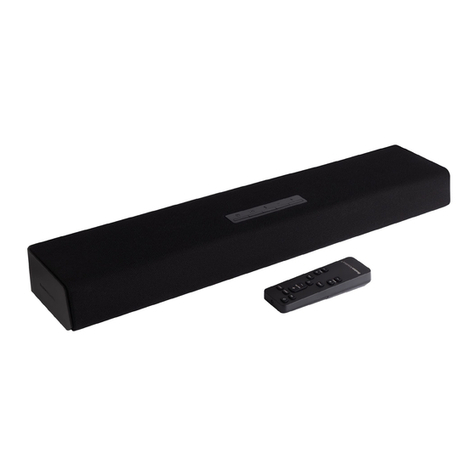
Boston Acoustics
Boston Acoustics TVee 22 User manual
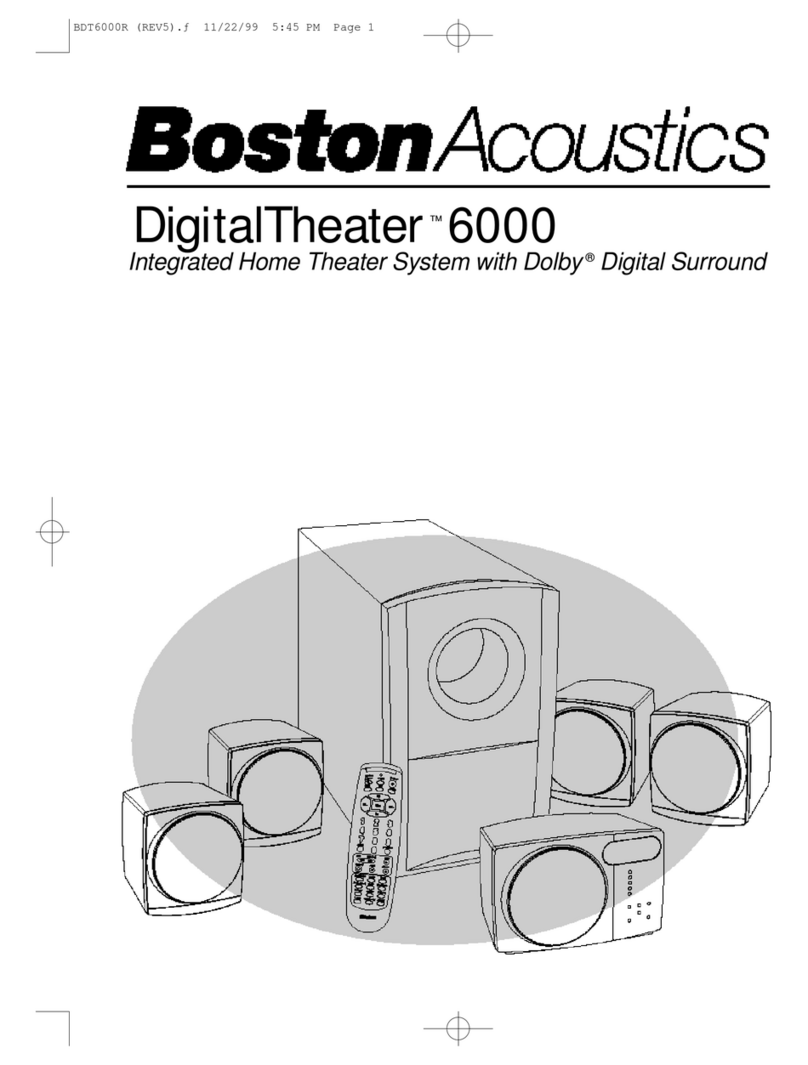
Boston Acoustics
Boston Acoustics DT6000 User manual

Boston Acoustics
Boston Acoustics MCS 160 User manual
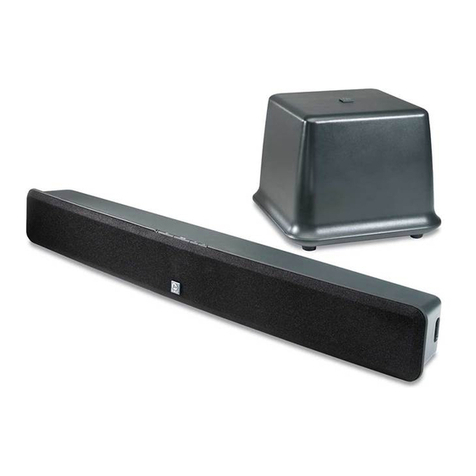
Boston Acoustics
Boston Acoustics TVee Model Two User manual
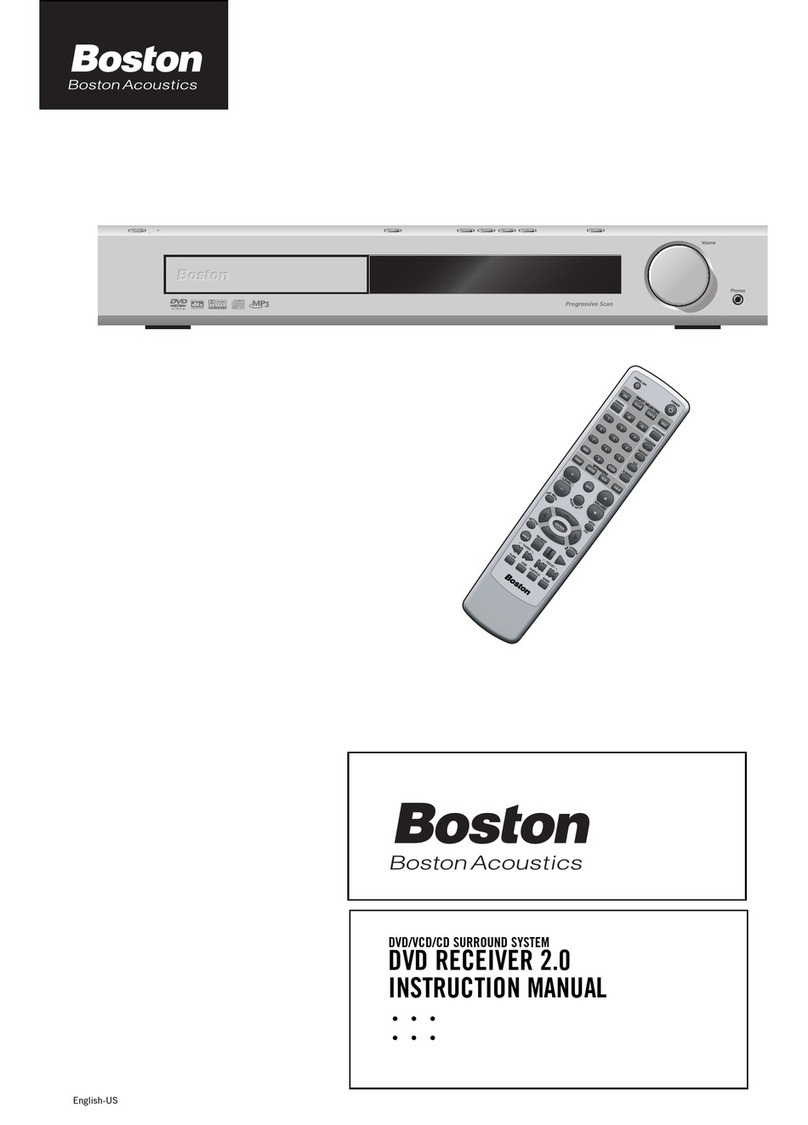
Boston Acoustics
Boston Acoustics Avidea 610 User manual
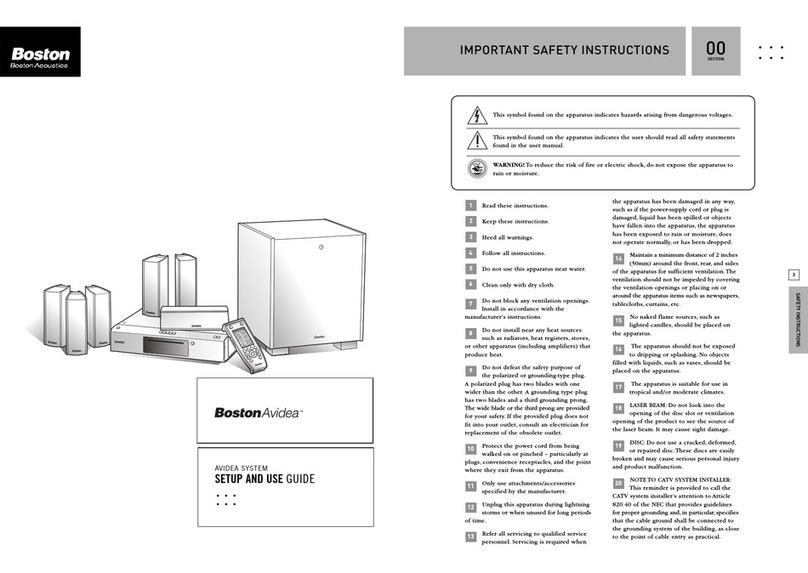
Boston Acoustics
Boston Acoustics Avidea 770 Safety guide

Boston Acoustics
Boston Acoustics TVee 300 User manual
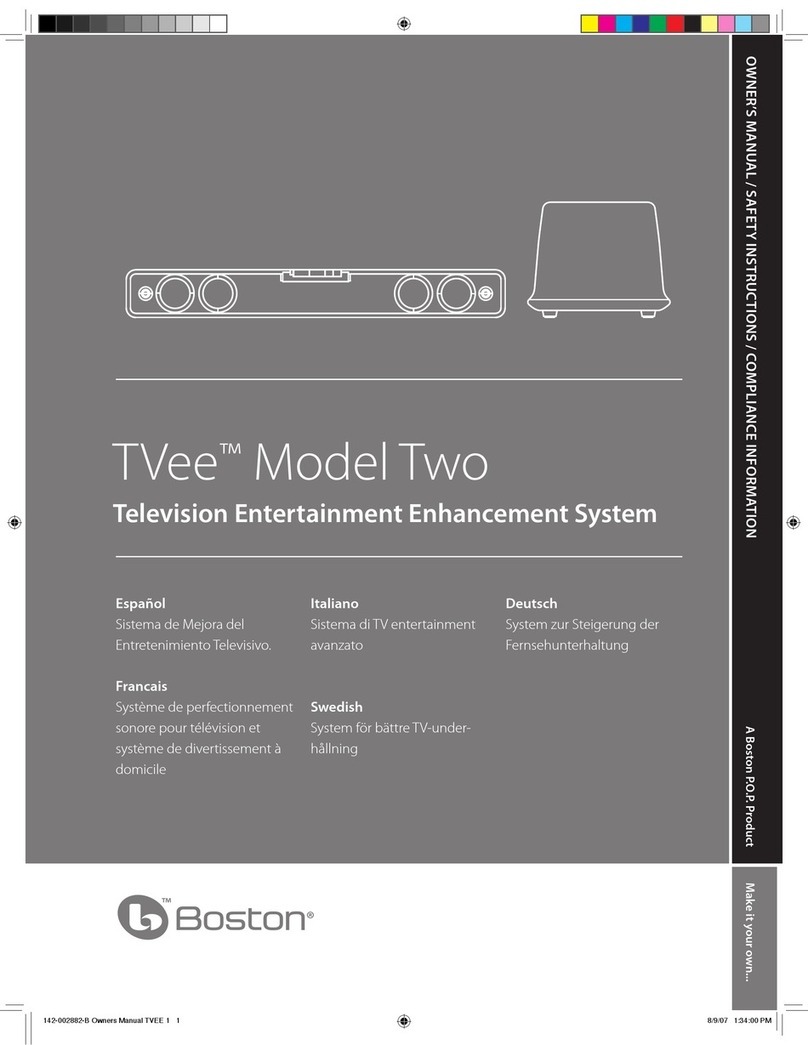
Boston Acoustics
Boston Acoustics TVee Model Two User manual

Boston Acoustics
Boston Acoustics Bassett's Nvelop User manual

Boston Acoustics
Boston Acoustics DT7000 User manual

